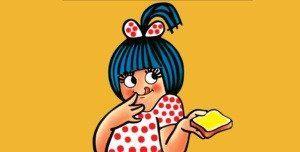
SAMIR MARDOLKER explains how brand mascots have to be managed to direct close relationships with customers
The Netflix show ‘Ankahi Kahaniya’ is about lonely souls in a big city discovering surprising sources of connection and companionship in three tales of love, loss and longing. One of the stories is about a salesman in a fashion store who falls in love with a mannequin. He talks to her, takes her out (yes, literally picks the mannequin and takes her to the beach, for a drive etc.). Sadly, he is fired for his craziness. This prompted the question – how crazy is it really to have such relationships?
Upcoming trend: Wanting to form a deep connection is fundamentally human. We developed deep connections with Superman, Spiderman and other fictional characters but did not take it to the mannequin level. Perhaps we were limited by their availability and ability to interact with us in the analog age. More important, perhaps we did not feel the need to connect deeply with fictional characters, given there were more ‘real’ people around us giving us time and attention and never making us feel ‘alone’. But in today’s digital age, real people are ‘busy’ and fictional characters have been made accessible on our phones with a tap or a swipe. Further, AI has the capability to have these bots interact with us and know everything about us that we share (e.g. can never forget our birthdays once registered). For sure, the craziness of forming relationships with digital human-like characters is bound to grow.

Leveraging AI led brand mascot bonding: Brands with human or life like mascots have a significant advantage to leverage the upcoming trend of forming relationships with digital human-like characters. They have an asset that can be digitised and AI powered and be made available to fuel consumer connections. Yet, I have not come across good examples of brands leveraging this opportunity to form meaningful connections. A classic example is the ‘Singapore girl’ – a timeless visual trademark and brand mascot for Singapore Airlines. And yet, I don’t see her on the website helping customers navigate bookings, interacting with them and taking a keen interest in their travel plans and offering opinions. In the Indian context, the ‘Amul Girl’ is an iconic mascot. In a market where there is so much chaos and disorder, I always felt a little bit of harmless fun would always be welcome. That is precisely what the Amul girl did. However, I believe there is more that she could do coming alive in the AI space. Why don’t we have a meaningful connect with the Amul girl?

Fostering obsession with brand mascots: Brand mascots have to be carefully managed just like any other brand asset to direct close relationships with consumers. Some mindset shifts are required to enable such relationships
• From being an icon to being a channel: Mascots are not just literally mascots to sport the brand identity or add visual appeal to the website/collateral but a communication channel in itself. Just as brands have dedicated teams to manage their webpage or Insta accounts, they will have to have a mascot manager. The Amul girl has scored on this account by being a standalone entity and clearly has a team that drives mascot led communication.
• From mass appeal to hyper-personalisation: There should concerted effort to accelerate the ‘know your customer process’. As an example, while the Singapore Airlines girl can track customer preferences and learn from choices they make, there is potential to accelerate the process by ‘asking’ the customers to log everything about them on the profile page. Ultimate goal of this process being – hyper personalisation of interactions with customers. Likewise the Amul bot could make witty personalised comments bringing a smile to the face spreading joy everyday beyond the billboards.
• From category issues to life connections: Connecting the brand mascot to other brands can help lock in customers by engaging them across the value chain. For instance, Singapore Airlines girl could talk to other travel related services like insurance, hotels, car rental etc. so she can manage trip bookings on the customer’s behalf. Even more important is to define the values the mascot has to support (and promote) and then deploy them to make meaningful contributions to society. The Amul girl can, for instance, support mental wellness causes leveraging her value of how a little bit of humour can spread cheer!
End note: The world is changing so fast that there is limited bandwidth for any type of craziness to survive for long. So if you have a crazy idea – just go for it. It will not take too long before it becomes mainstream.





